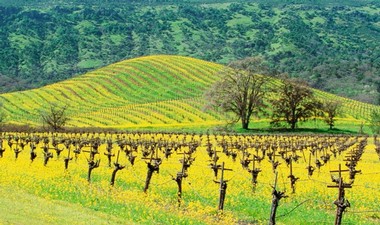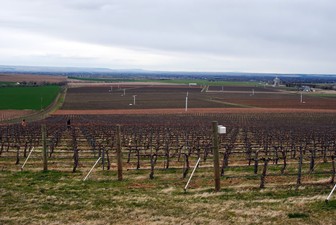Thanks to winter rains and the hearty wild mustard

It never grows old living in the Napa Valley. We rise with the sun as it crests the Palisades; we rise with the mists as they melt into the valley’s morning light; we rise with the cerulean sky as it shrouds Mount St. Helena. Napa Valley is a beautiful place to live, nestled as it is between the Mayacamas and the Vaca Mountains. Rural yet urban, from mountaintop to valley floor, it seems to have something to say to just about everyone.

Most everyone in the area is touched in one way or another by the grapes that are grown here. They are the common thread binding many of us to this place, although only 9 percent of the county is planted to vineyards. It hasn’t always been that way, yet grapes have played a critical role in the way the valley has developed for many more years than most of us realize.
When George Yount planted the first vineyard in the county in the late 1830s, it’s unlikely he envisioned the 45,000 acres of vines in the valley today. But with the rush of gold-seeking 49ers to the San Francisco Bay and a railroad to aid in their transport, wine and grapes became the commodities of Yount’s day, replacing the cattle, grains, prunes, and pears that had once carpeted a large part of the Napa Valley.
Thanks to winter rains, the hearty wild mustard starts populating the valley floor with blossoms in December and blooms until about March, when many winemakers, including ourselves, plow it back into the soil, where it adds nitrogen.
